Optimal Scheduling of Hybrid Sustainable Energy Microgrid: A Case Study for a Resort in Sokhna, Egypt
Abstract
1. Introduction
2. Description of the Hybrid Microgrid
2.1. Solar Energy
2.2. Wind Energy
- (i)
- The velocity of the wind at the hub height of the turbine is calculated. The hub height wind speed uses the average velocity of the wind at the anemometer height (corresponding to the wind data) by applying the logarithmic theory, and according to the next equation, it is used for estimation [23,24].
- (ii)
- The output power of the wind turbine at the calculated velocity from the first step and at a nominal air density of 1.225 kg/m3 (compatible with nominal pressure and temperature conditions) is obtained.
- (iii)
- The value of the calculated output power to the actual conditions is adjusted. This is achieved by multiplying the calculated output power by the ratio of air density, i.e., the ratio of the real density of the air to the nominal air density, according to the following equation [25]:
2.3. Energy Storage
3. Optimization Approach
4. Numerical Results and Discussions
4.1. The Simulated System
4.2. Case 1: PV and Diesel
4.3. Case 2: PV, Diesel, and Grid
4.4. Case 3: PV, Diesel, and Wind without Grid
4.5. Case 4: PV, Diesel, Wind, and Grid
5. Conclusions
Author Contributions
Funding
Institutional Review Board Statement
Informed Consent Statement
Data Availability Statement
Conflicts of Interest
Nomenclature & Abbreviations
| Swept area by the blades of the wind rotor | |
| Wind turbine power coefficient | |
| Factor of carbon emission | |
| Energy band gap (1.12 eV for silicon) | |
| Hub height of the turbine | |
| Height of the anemometer | |
| Roughness length of the surface | |
| Value of fuel heating | |
| I | Output current produced by the solar cell |
| Photocurrent generated by solar radiation | |
| Reverse current of the diode | |
| IS | Saturation current |
| Current at short circuit | |
| ISH | Shunt current |
| i | Rate of annual interest |
| k | Boltzmann constant |
| Quantity of fuel | |
| n | Ideality factor of the cell (equal to 1 for ideal cell) |
| N | Number of annuities received |
| Number of cells connected in parallel | |
| Number of cells connected in cascade | |
| Output power of the wind turbine | |
| Power of the wind turbine at nominal conditions | |
| q | Electron charge |
| R | Length of the radius of the swept area by the turbine blades |
| Internal series resistance of the PV cell | |
| Shunt resistance of the PV cell | |
| T | Room operating temperature |
| Nominal temperature | |
| Voltage at the diode terminal | |
| V | Terminal voltage at the cell ends |
| Velocity of wind at anemometer height | |
| Speed of wind determined at the hub height of the turbine | |
| Voltage at open circuit | |
| Wind speed | |
| Part of oxidized carbon | |
| Pitch angle | |
| λ | Tip speed ratio |
| Angular speed of the turbine shaft | |
| ρ | Real density of air |
| ρ0 | Nominal air density at nominal states |
| CO2 | Carbon dioxide |
| CoEs | Cost of energies |
| Capital recovery factor | |
| CSP | Concentrating solar power |
| LCoE | Levelized CoE |
| NPC | Net present cost |
| PV | Photovoltaic |
References
- Abeydeera, L.H.U.W.; Mesthrige, J.W.; Samarasinghalage, T.I. Global Research on Carbon Emissions: A Scientometric Review. Sustainability 2019, 11, 3972. [Google Scholar] [CrossRef]
- IRENA. Renewable Power Generation Costs in 2017; IRENA: Abu Dhabi, United Arab Emirates, 2018; ISBN 978-92-9260-040-2. [Google Scholar]
- Temiz, M.; Dincer, I. Development of solar and wind based hydrogen energy systems for sustainable communities. Energy Convers. Manag. 2022, 269, 116090. [Google Scholar] [CrossRef]
- IRENA. Renewable Power Generation Costs in 2020; IRENA: Abu Dhabi, United Arab Emirates, 2021; ISBN 978-92-9260-348-9. [Google Scholar]
- IRENA. Renewable Capacity Statistics 2021; IRENA: Abu Dhabi, United Arab Emirates, 2021; ISBN 978-92-9260-342-7. [Google Scholar]
- IRENA. Renewable Capacity Highlights; IRENA: Abu Dhabi, United Arab Emirates, 2022; Available online: https://www.irena.org/-/media/Files/IRENA/Agency/Publication/2022/Apr/IRENA_-RE_Capacity_Highlights_2022.pdf?la=en&hash=6122BF5666A36BECD5AAA2050B011ECE255B3BC7 (accessed on 23 August 2022).
- Cai, M.; Wu, Y.; Chen, H.; Yang, X.; Qiang, Y.; Han, L. Cost-Performance Analysis of Perovskite Solar Modules. Adv. Sci. 2016, 4, 1600269. [Google Scholar] [CrossRef] [PubMed]
- Al Ayn as Sukhnah. www.geonames.org. Available online: https://www.geonames.org/359541/al-ayn-as-sukhnah.html (accessed on 15 September 2022).
- As Sukhnah Monthly Weather Averages. Available online: https://www.weather2visit.com/middle-east/yemen/as-sukhnah.htm (accessed on 10 September 2022).
- Shahsavari, A.; Akbari, M. Potential of solar energy in developing countries for reducing energy-related emissions. Renew. Sustain. Energy Rev. 2018, 90, 275–291. [Google Scholar] [CrossRef]
- Kabalci, E. Design and analysis of a hybrid renewable energy plant with solar and wind power. Energy Convers. Manag. 2013, 72, 51–59. [Google Scholar] [CrossRef]
- Solar Energy Is the Fastest Growing Renewable Energy Source. Available online: https://quebecsolar.ca/solar-energy-is-the-fastest-growing-renewable-energy-source (accessed on 5 September 2022).
- Moheb, A.M.; El-Hay, E.A.; El-Fergany, A.A. Comprehensive Review on Fault Ride-Through Requirements of Renewable Hybrid Microgrids. Energies 2022, 15, 6785. [Google Scholar] [CrossRef]
- Ding, Z.; Hou, H.; Yu, G.; Hu, E.; Duan, L.; Zhao, J. Performance analysis of a wind-solar hybrid power generation system. Energy Convers. Manag. 2018, 181, 223–234. [Google Scholar] [CrossRef]
- Zheng, Z.; Zhou, J.; Xu, F.; Zhang, R.; Deng, G. Integrated operation of PV assisted ground source heat pump and air source heat pump system: Performance analysis and economic optimization. Energy Convers. Manag. 2022, 269. [Google Scholar] [CrossRef]
- Ginidi, A.; Ghoneim, S.M.; Elsayed, A.; El-Sehiemy, R.; Shaheen, A.; El-Fergany, A. Gorilla Troops Optimizer for Electrically Based Single and Double-Diode Models of Solar Photovoltaic Systems. Sustainability 2021, 13, 9459. [Google Scholar] [CrossRef]
- IRENA. Renewable Power Generation Costs in 2019; IRENA: Abu Dhabi, United Arab Emirates, 2020; ISBN 978-92-9260-244-4. [Google Scholar]
- Piprek, J. Handbook of Optoelectronic Device Modeling and Simulation: Lasers, Modulators, Photodetectors, Solar Cells, and 469 Numerical Methods, 1st ed.; CRC Press: Boca Raton, FL, USA, 2017. [Google Scholar] [CrossRef]
- Fraas, L.; Partain, L. Solar Cells and their Applications, 2nd ed.; John Wiley & Sons, Inc.: Hoboken, NJ, USA, 2010. [Google Scholar] [CrossRef]
- Bellia, H.; Youcef, R.; Fatima, M. A detailed modeling of photovoltaic module using MATLAB. NRIAG J. Astron. Geophys. 2014, 3, 53–61. [Google Scholar] [CrossRef]
- Ma, T.; Yang, H.; Lu, L. Solar photovoltaic system modeling and performance prediction. Renew. Sustain. Energy Rev. 2014, 36, 304–315. [Google Scholar] [CrossRef]
- Heier, S. Grid Integration of Wind Energy, 1st ed.; John Wiley & Sons: Hoboken, NJ, USA, 2014. [Google Scholar] [CrossRef]
- Ibrahim, M.M.; Mostafa, N.H.; Osman, A.H.; Hesham, A. Performance analysis of a stand-alone hybrid energy system for desalination unit in Egypt. Energy Convers. Manag. 2020, 215, 112941. [Google Scholar] [CrossRef]
- Baneshi, M.; Hadianfard, F. Techno-economic feasibility of hybrid diesel/PV/wind/battery electricity generation systems for non-residential large electricity consumers under southern Iran climate conditions. Energy Convers. Manag. 2016, 127, 233–244. [Google Scholar] [CrossRef]
- Antonio Barrozo Budes, F.; Valencia Ochoa, G.; Obregon, L.G.; Arango-Manrique, A.; Ricardo Núñez Álvarez, J. Energy, Economic, and Environmental Evaluation of a Proposed Solar-Wind Power On-grid System Using HOMER Pro®: A Case Study in Colombia. Energies 2020, 13, 1662. [Google Scholar] [CrossRef]
- Stiebler, M. Wind Energy Systems for Electric Power Generation, 1st ed.; Springer: Berlin/Heidelberg, Germany, 2008. [Google Scholar] [CrossRef]
- Hu, Z. Energy Storage for Power System Planning and Operation, 1st ed.; John Wiley & Sons: Hoboken, NJ, USA, 2020. [Google Scholar] [CrossRef]
- Project Spotlight: 2400-MW Ataqa Pumped Storage in Egypt. Available online: https://www.hydroreview.com/world-regions/project-spotlight-2-400-mw-ataqa-pumped-storage-in-egypt/#gref (accessed on 20 August 2022).
- Rodríguez, N.; Gupta, A.; Zabala, P.L.; Cabrera-Guerrero, G. Optimization Algorithms Combining (Meta)heuristics and Mathematical Programming and Its Application in Engineering. Math. Probl. Eng. 2018, 2018, 3967457. [Google Scholar] [CrossRef]
- Jung, J.; Villaran, M. Optimal planning and design of hybrid renewable energy systems for microgrids. Renew. Sustain. Energy Rev. 2017, 75, 180–191. [Google Scholar] [CrossRef]
- Cardenas, G.A.R.; Khezri, R.; Mahmoudi, A.; Kahourzadeh, S. Optimal Planning of Remote Microgrids with Multi-Size Split-Diesel Generators. Sustainability 2022, 14, 2892. [Google Scholar] [CrossRef]
- Rahimi, M.; Ardakani, F.J.; Ardakani, A.J. Optimal stochastic scheduling of electrical and thermal renewable and non-renewable resources in virtual power plant. Int. J. Electr. Power Energy Syst. 2020, 127, 106658. [Google Scholar] [CrossRef]
- Ahmad, S.; Ullah, I.; Jamil, F.; Kim, D. Toward the Optimal Operation of Hybrid Renewable Energy Resources in Microgrids. Energies 2020, 13, 5482. [Google Scholar] [CrossRef]
- Ramli, M.A.; Bouchekara, H.; Alghamdi, A.S. Optimal sizing of PV/wind/diesel hybrid microgrid system using multi-objective self-adaptive differential evolution algorithm. Renew. Energy 2018, 121, 400–411. [Google Scholar] [CrossRef]
- Emmanouil, S.; Philhower, J.; Macdonald, S.; Khadim, F.; Yang, M.; Atsbeha, E.; Nagireddy, H.; Roach, N.; Holzer, E.; Anagnostou, E. A Comprehensive Approach to the Design of a Renewable Energy Microgrid for Rural Ethiopia: The Technical and Social Perspectives. Sustainability 2021, 13, 3974. [Google Scholar] [CrossRef]
- AlKassem, A.; Draou, A.; Alamri, A.; Alharbi, H. Design Analysis of an Optimal Microgrid System for the Integration of Renewable Energy Sources at a University Campus. Sustainability 2022, 14, 4175. [Google Scholar] [CrossRef]
- HOMER Pro 3.14 User Manual. Available online: https://www.homerenergy.com/products/pro/docs/latest/index.html (accessed on 3 April 2020).
- Bahramara, S.; Moghaddam, M.P.; Haghifam, M.R. Optimal planning of hybrid renewable energy systems using HOMER: A review. Renew. Sustain. Energy Rev. 2016, 62, 609–620. [Google Scholar] [CrossRef]
- Bhandari, B.; Lee, K.-T.; Lee, G.-Y.; Cho, Y.-M.; Ahn, S.-H. Optimization of hybrid renewable energy power systems: A review. Int. J. Precis. Eng. Manuf. Technol. 2015, 2, 99–112. [Google Scholar] [CrossRef]
- Conteh, F.; Takahashi, H.; Hemeida, A.M.; Krishnan, N.; Mikhaylov, A.; Senjyu, T. Analysis of Hybrid Grid-Connected Renewable Power Generation for Sustainable Electricity Supply in Sierra Leone. Sustainability 2021, 13, 11435. [Google Scholar] [CrossRef]
- Vengala, J.; Ramesh, K.; Manjunatha, M.; Dharek, M.S.; Kumar, B.K.S. Embodied energy and operational energy computations for a typical G+3 residential building in Vijayawada city of Andhra Pradesh, India. Int. J. Adv. Technol. Eng. Explor. 2021, 8, 1049–1058. [Google Scholar] [CrossRef]
- Elomari, Y.; Norouzi, M.; Marín-Genescà, M.; Fernández, A.; Boer, D. Integration of Solar Photovoltaic Systems into Power Networks: A Scientific Evolution Analysis. Sustainability 2022, 14, 9249. [Google Scholar] [CrossRef]
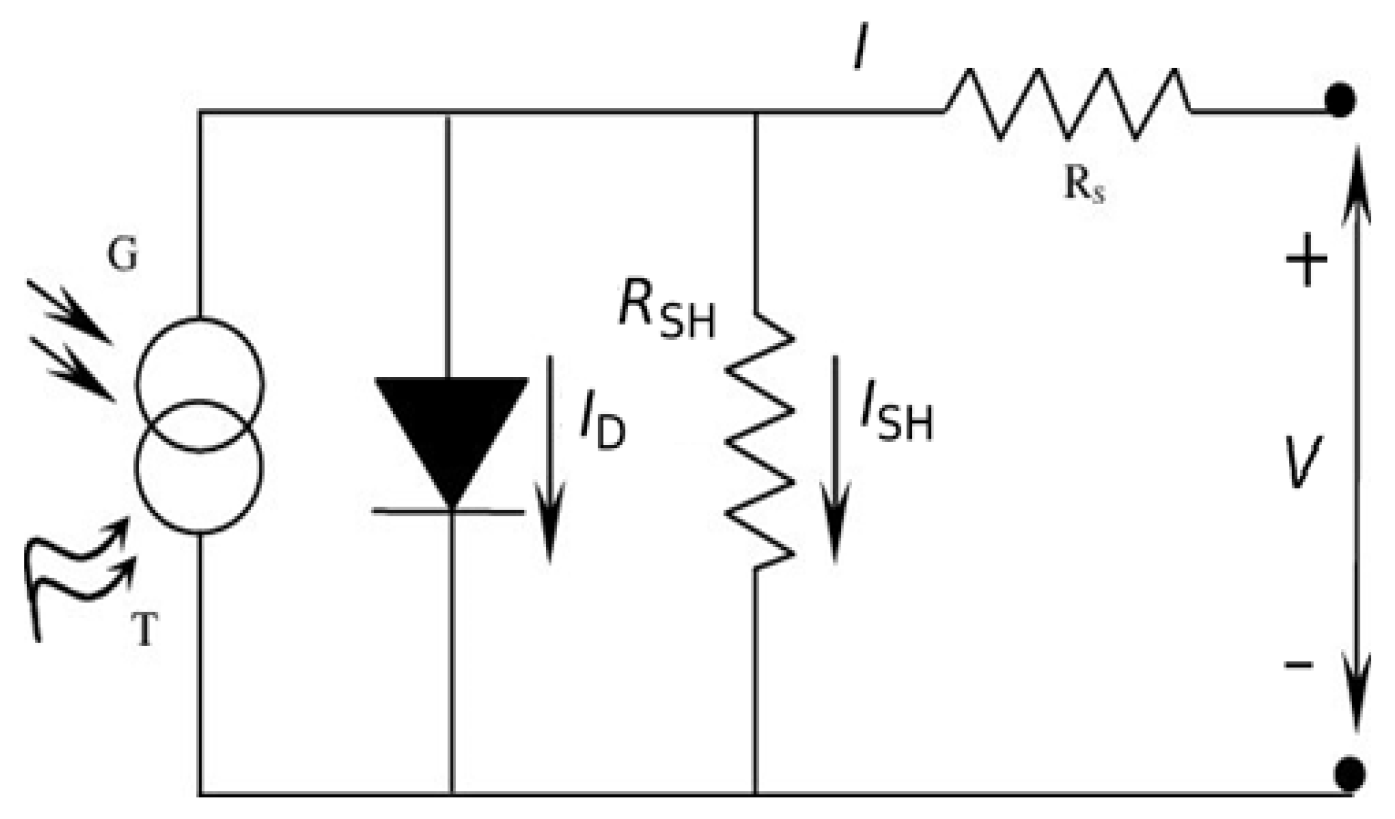
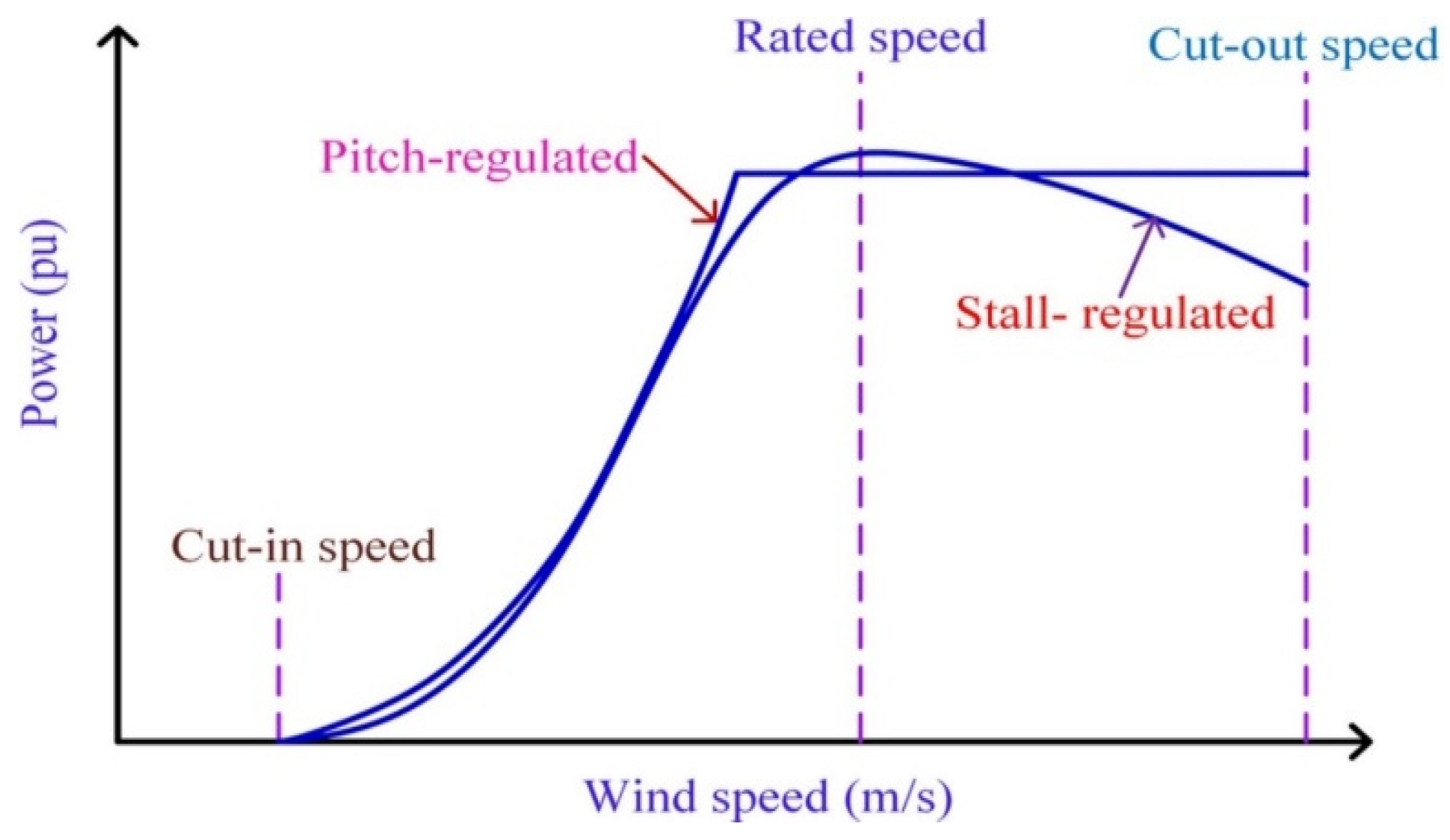
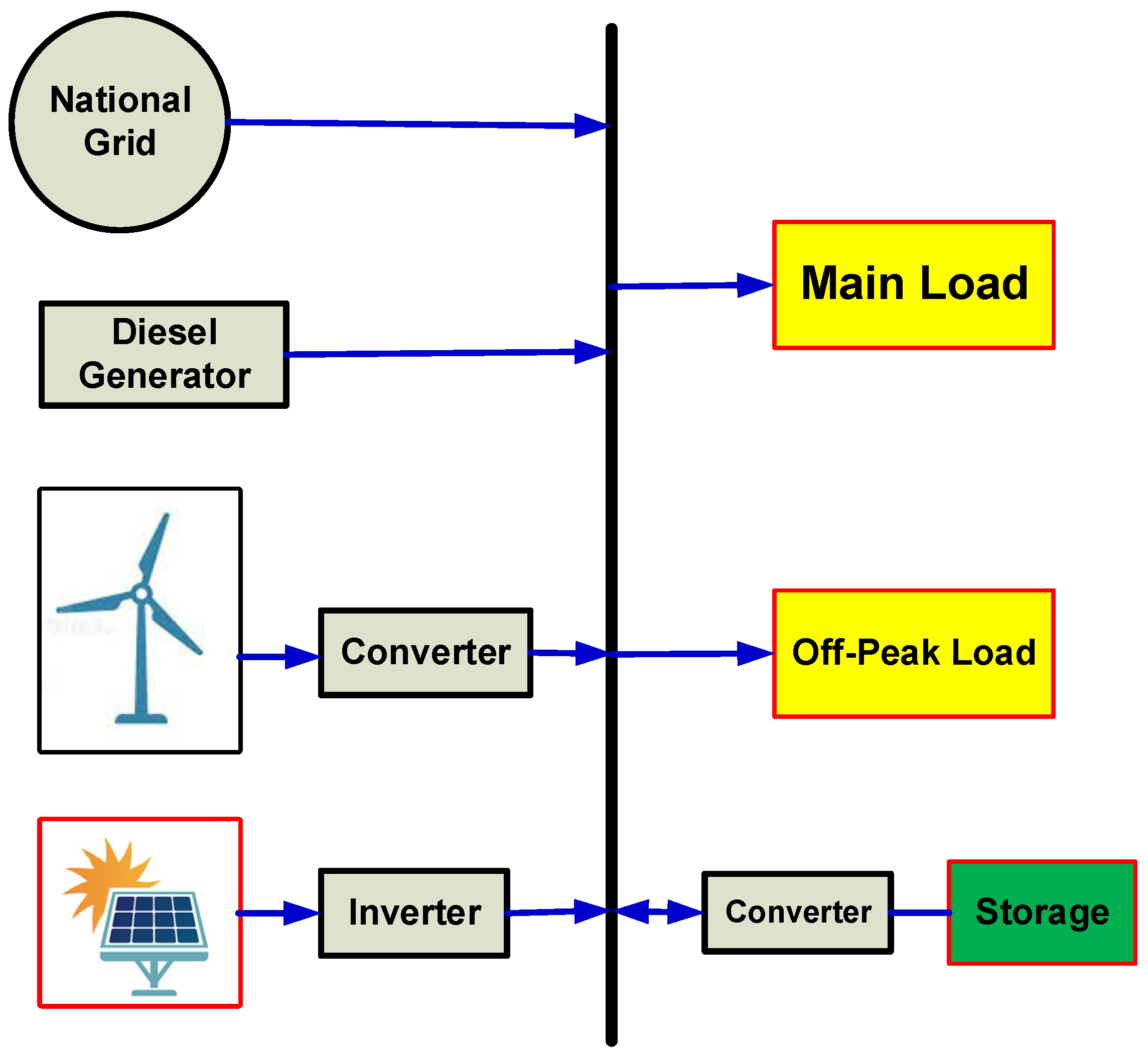
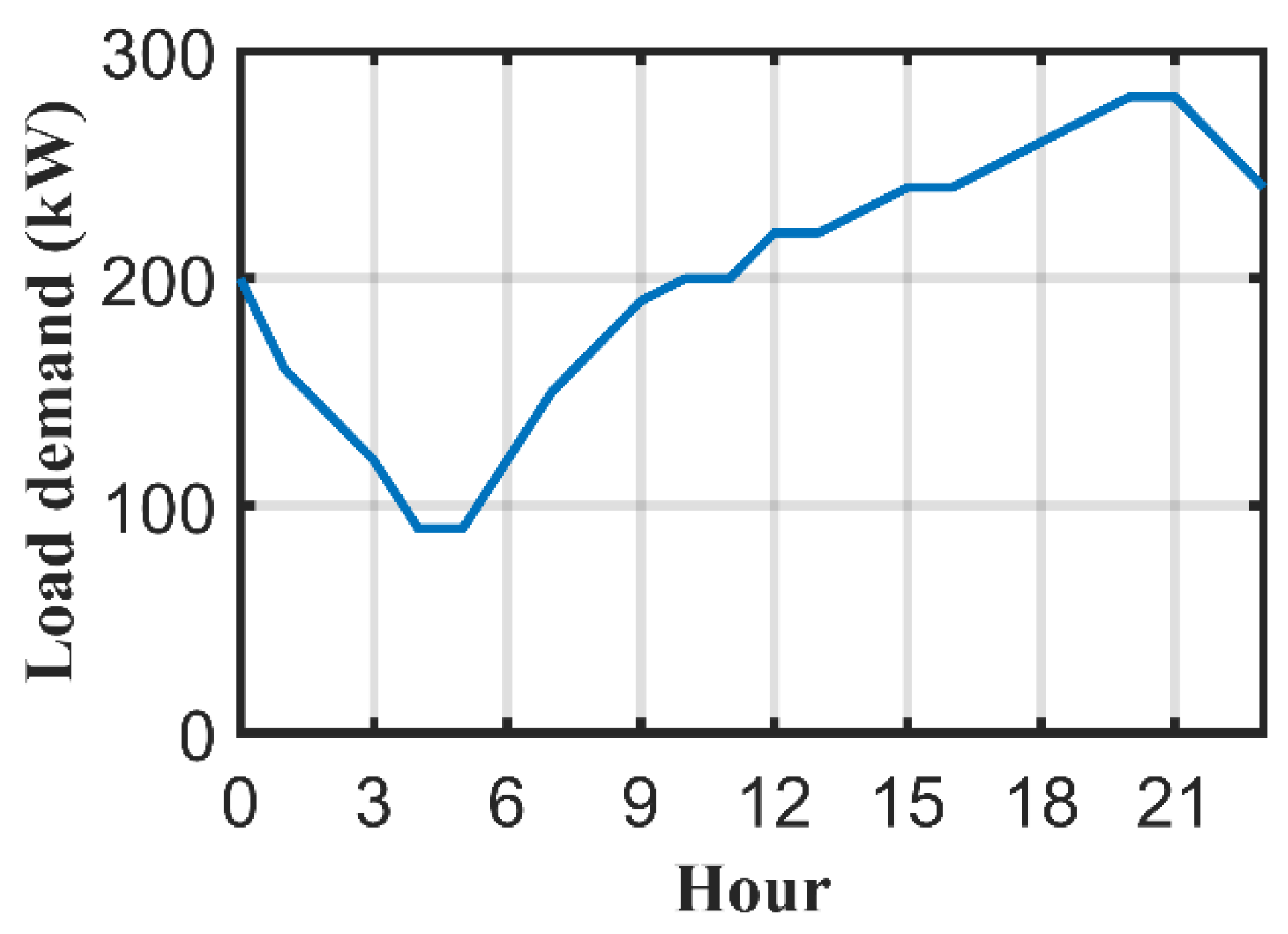

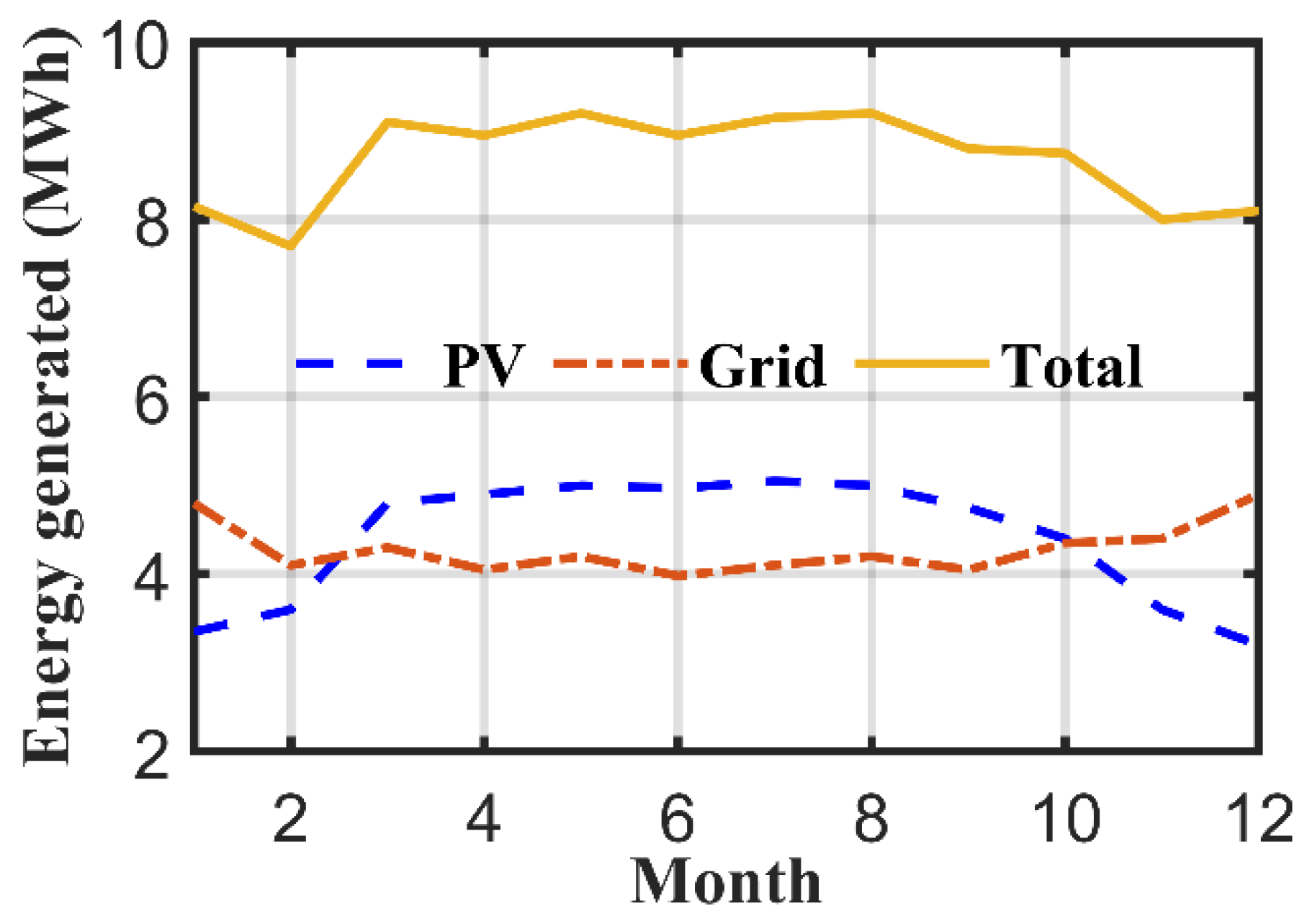
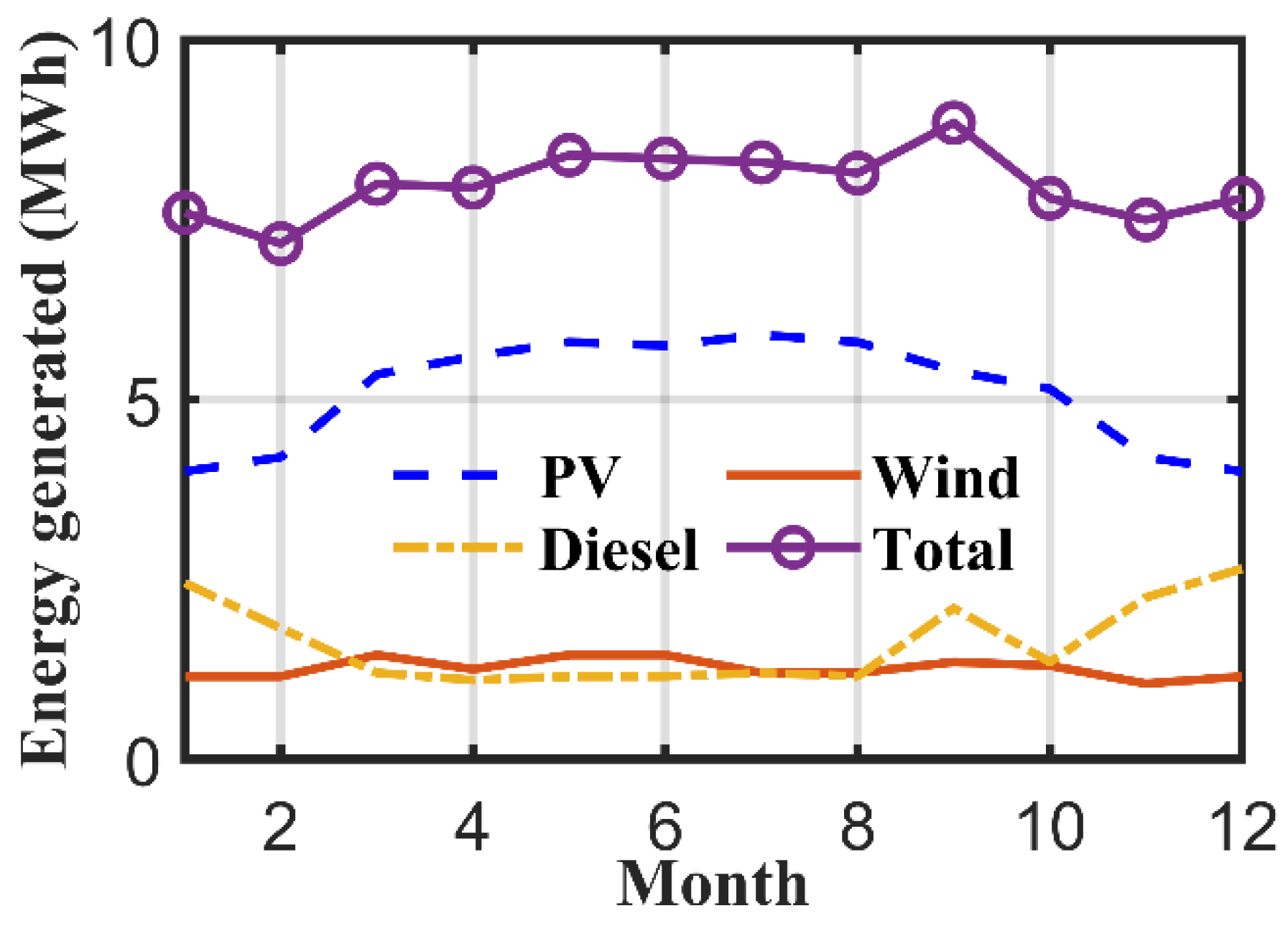
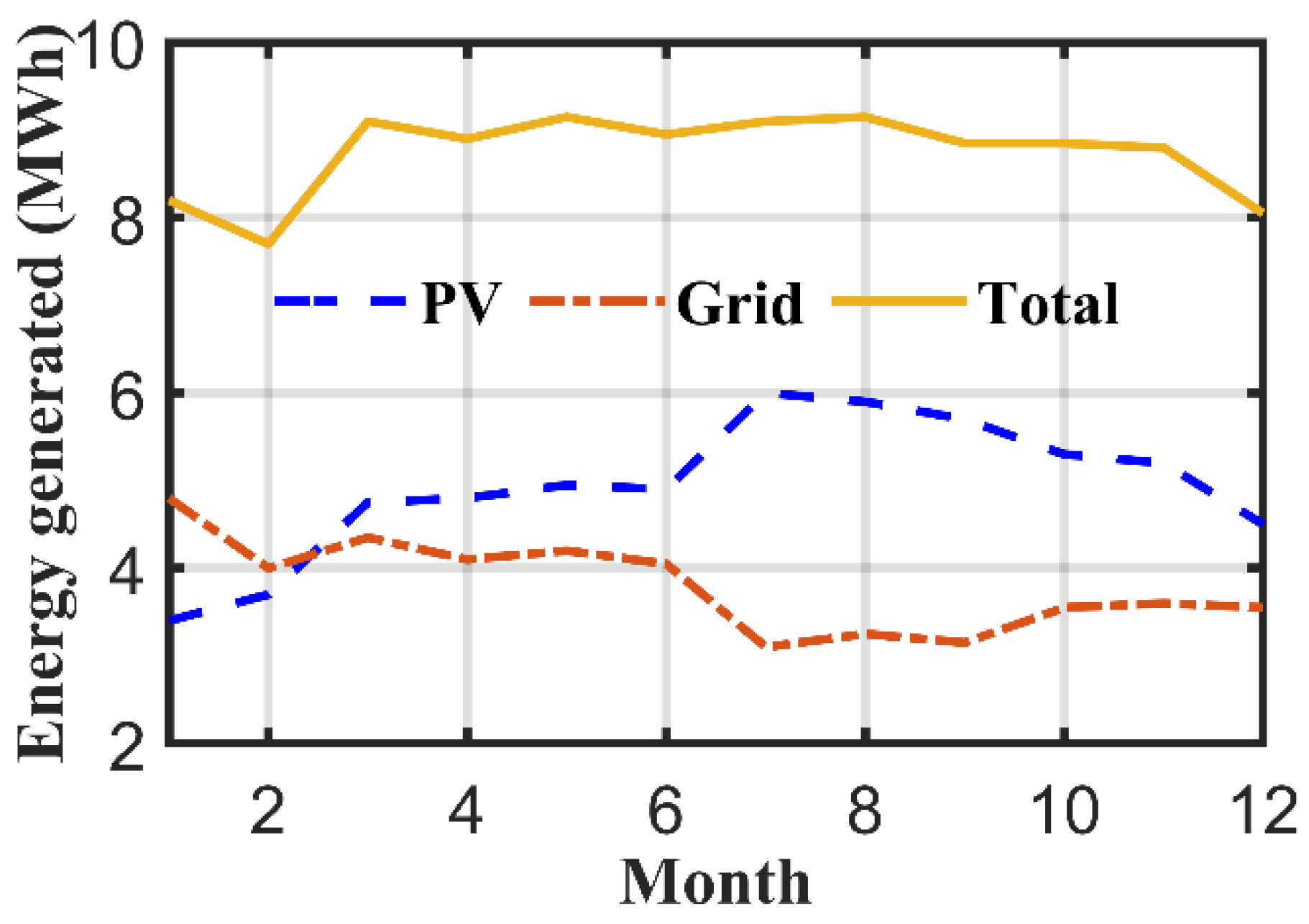
| Case | PV | Wind | Diesel | Grid | Storage |
|---|---|---|---|---|---|
| 1 | ✓ | ꭗ | ✓ | ꭗ | ✓ |
| 2 | ✓ | ꭗ | ✓ | ✓ | ꭗ |
| 3 | ✓ | ✓ | ✓ | ꭗ | ✓ |
| 4 | ✓ | ✓ | ✓ | ✓ | ꭗ |
| Test Case | Case 1 | Case 2 | Case 3 | Case 4 |
|---|---|---|---|---|
| NPC ($) | 218,182 | 89,367 | 206,713 | 89,356 |
| CoE ($/kWh) | 0.141 | 0.0441 | 0.134 | 0.0443 |
| PV (kW) | 58.8 | 31.5 | 44.2 | 30.8 |
| Wind (kW) | - | - | - | - |
| Diesel (kW) | 47 | - | 47 | - |
| Storage (kW) | 48 | - | 55 | - |
| Grid (kW) | - | exist | - | exist |
Publisher’s Note: MDPI stays neutral with regard to jurisdictional claims in published maps and institutional affiliations. |
© 2022 by the authors. Licensee MDPI, Basel, Switzerland. This article is an open access article distributed under the terms and conditions of the Creative Commons Attribution (CC BY) license (https://creativecommons.org/licenses/by/4.0/).
Share and Cite
Abdelaal, A.K.; Mohamed, E.F.; El-Fergany, A.A. Optimal Scheduling of Hybrid Sustainable Energy Microgrid: A Case Study for a Resort in Sokhna, Egypt. Sustainability 2022, 14, 12948. https://doi.org/10.3390/su141912948
Abdelaal AK, Mohamed EF, El-Fergany AA. Optimal Scheduling of Hybrid Sustainable Energy Microgrid: A Case Study for a Resort in Sokhna, Egypt. Sustainability. 2022; 14(19):12948. https://doi.org/10.3390/su141912948
Chicago/Turabian StyleAbdelaal, Ashraf K., Elshahat F. Mohamed, and Attia A. El-Fergany. 2022. "Optimal Scheduling of Hybrid Sustainable Energy Microgrid: A Case Study for a Resort in Sokhna, Egypt" Sustainability 14, no. 19: 12948. https://doi.org/10.3390/su141912948
APA StyleAbdelaal, A. K., Mohamed, E. F., & El-Fergany, A. A. (2022). Optimal Scheduling of Hybrid Sustainable Energy Microgrid: A Case Study for a Resort in Sokhna, Egypt. Sustainability, 14(19), 12948. https://doi.org/10.3390/su141912948








